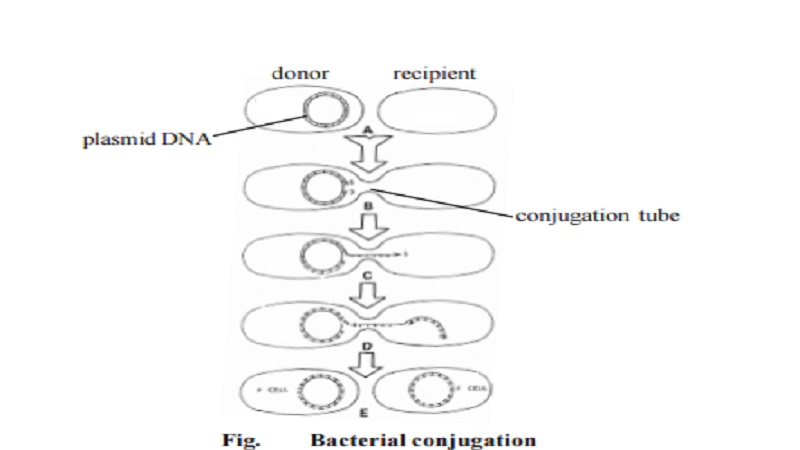Chapter: 11th 12th standard bio zoology Human Body higher secondary school
Bacterial Genetics

Bacterial Genetics :
In bacteria the cells have a single circular
strand of DNA. It is not associated with proteins as are eukaryotic
chromosomes. The bacterial genes, like the eukaryotic genes possess the
features of replication, phenotype expression, mutation and genetic
recombination etc. In bacteria the genetic recombination results from three
types of gene transfer viz., conjugation, transduction and transformation.
Conjugation involves the transfer of some DNA
from one bacterial cell to another followed by the separation of the mating
pair of cells. In this, large segments of the chromosomes and in special cases
the entire chromosome may be transferred.
Bacterial transformation is a process in
which cell free or naked DNA containing the genetic information is transferred
from one bacterial cell to another. It was discovered by an English health
officer, Griffith in 1928. The transforming principle was identified as DNA by
Avery Macleod and Mc Carthy in 1944.
In transduction, a
bacteriophages acts as a vector, transfering a por-tion of DNA from one
bacterium (donor) to another (recepient). If all frag-ments of bacterial DNA
have a chance to enter a transducing phage, the process is called Generalized transduction. On the
contrary if a few re-stricted genes of the bacterial chromosomes are transduced
by bacterioph-age, it is called specialized
transduction.
Bacterial Culture
All bacteria need nutrients for their growth. They need a nutrient
medium for their growth and culture. A bacteriological medium is composed of
known chemical compounds. It is called a chemically defined medium or synthetic
medium, The compounds are carbohydrates, proteins, nucleic acids, lipids,
vitamins and other complex organic substances. Certain complex materials
include peptones, meat extract, yeast extract etc. The medium with the above
raw materials can support the growth of a wide variety of heterotrophic
bacteria. Agar is included as a non-nutritive solidifying agent. Nutrient agar
and nutrient broth are the simple solid and liquid media for the growth of
heterotrophs respectively.
Related Topics